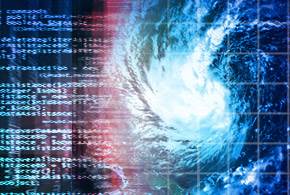NEWS ANALYSIS: Cities and states in the areas of the Southeastern United States hit by Hurricane Matthew were proactive in ordering evacuations, but did it work?
The warnings were grim with this storm. As Hurricane Matthew was moving through the Caribbean with deadly effect, Florida Governor Rick Scott was already warning residents of the state that they needed to leave the low-lying areas in the eastern parts of the state. If people didn’t leave, he said, “This storm will kill you. It’s a monster, get out.”
Scott was not alone in his warnings. In South Carolina, Governor Nikki Haley was also warning residents to leave low-lying areas. “This is a storm we want to take seriously,” she said, “There is nothing safe about what is getting ready to happen,” she said urging residents to evacuate. Later, news photos showed all lanes on Interstate highways leaving South Carolina’s coastal areas filled with cars. Clearly, people were listening.
But the next question always has to be how complete the evacuation was. People who refuse to leave an evacuated area cause significant problems for themselves and for the first responders who are also staying behind. First, they may die, which isn’t a good thing. But more likely, those people will find that they underestimated the fury of the storm, and will demand to be rescued. This scenario plays out in every major storm, and the onslaught of Hurricane Matthew was no exception.
However, even if you can’t make everyone leave an area, it at least helps to have some idea how many people stayed behind, and approximately where they are. This is where Mogean Inc. comes in. The company uses location services data from mobile phones to develop geolocation data and produce predictive analytics that can provide products and services to consumers.
But when the hurricane started to crush its way toward the United States, Mogean’s executives decided to put the location data they were collecting to use in helping with the emergency. The task they gave themselves was to determine what areas under evacuation orders were actually evacuated, and which were not.
As the storm grew closer, Mogean’s staff started to see patterns. Some areas in Florida and South Carolina were making good progress in evacuating their citizens, but some were not. If state leaders had access to this data, they’d know where to concentrate their efforts and where their efforts were already working.
“We can create a bread crumb trail from mobile apps,” Mogean co-founder and Chief Operating Officer Reid Maulsby said. He explained that they were able to get the location data from those mobile apps, which include a wide variety of sports and entertainment apps on iOS and Android cell phones, and use that data to determine where and when people were moving.
Explaining that Mogean receives no personal information, Maulsby said that the company’s data sets can still tell where people go. “We can identify where people spend time, where they work and live. We can compare that with data from the National Weather Service and information on mandatory evacuations.”
Maulsby said that the company can only read the data from phone users who have allowed location services on their devices, but he said that this is enough to determine trends showing how many people are leaving an area and where they’re going.






![[Video] Samsung Outlines AI Vision at The First Look 2026](https://loginby.com/itnews/wp-content/uploads/2026/01/Video-Samsung-Outlines-AI-Vision-at-The-First-Look-2026-100x75.jpg)